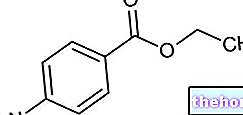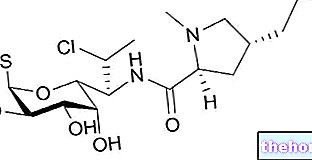CARDIOVASC ® is a drug based on Lercanidipine hydrochloride.
THERAPEUTIC GROUP: Calcium antagonist with a predominantly vascular effect.

Indications CARDIOVASC ® Lercanidipine hydrochloride
CARDIOVASC® is a drug indicated for the treatment of mild or moderate essential hypertension.
Mechanism of action CARDIOVASC ® Lercanidipine hydrochloride
CARDIOVASC ® has lercanidipine as the active ingredient, a molecule belonging to the dihydropyridine family. This substance is rapidly and completely absorbed in the intestine and transported into the blood, where it reaches a maximum between the second and third hour. The therapeutic action of lercanidipine is mainly due to the S enantiomer, capable of binding and blocking the a1 receptor subunits of slow-type calcium channels, inhibiting the incoming flow of this element and thus preventing the contraction of smooth muscle cells. The antihypertensive effect is therefore due to a precise action of the active principle on the arterial muscle cells, which allows a significant reduction in peripheral vascular resistance (vasodilatory effect).
Lercanidipine is characterized by a slow and prolonged action, guaranteed by the permanence in the cell membranes, at the end of which, after about 24 hours, it is metabolized by the hepatic cytochromes and eliminated in equal parts through faeces and urine.
Studies carried out and clinical efficacy
1. THE POSSIBLE PREVENTIVE ROLE OF LERCANIDIPINE
Pharmacol Res. 2009 Jan; 59: 48-56. Epub 2008 Oct 5.
Lercanidipine inhibits vascular smooth muscle cell proliferation and neointimal formation via reducing intracellular reactive oxygen species and inactivating Ras-ERK1 / 2 signaling.
Wu JR, Liou SF, Lin SW, Chai CY, Dai ZK, Liang JC, Chen IJ, Yeh JL.
Although still in an in vitro experimentation phase, lercanidipine appears to be able to prevent the proliferation and differentiation of arteriolar smooth muscle cells. This particular ability could not only assist the antihypertensive effect exerted by the muscle relaxant action, but also reduce the vascular thickening, responsible for the worsening of the haemodynamic properties.
2. CALCIUM ANTAGONISTS AND PERIPHERAL EDEMA: the advantages of lercanidipine
Clin Ther. 2009 Aug; 31: 1652-63.
Results of a meta-analysis comparing the tolerability of lercanidipine and other dihydropyridine calcium channel blockers.
Makarounas-Kirchmann K, Glover-Koudounas S, Ferrari P.
Lercanidipine appears to be among the safest calcium channel blockers with a dihydropyridine structure currently used in clinical practice. In fact, an important meta-analysis study shows how the incidence of peripheral edema and consequent suspension of drug therapy is decidedly reduced in patients undergoing therapy with lercanidipine compared to other calcium antagonists.
3. THE EFFECTIVENESS OF COMBINED THERAPY IN THE TREATMENT OF HYPERTENSION
Clin Drug Investig. 2010; 30: 843-54.
Rationale for the use of a fixed-dose combination in the management of hypertension: efficacy and tolerability of lercanidipine / enalapril.
Borghi C, Cicero AF.
The administration of calcium channel blockers and inhibitors of the renin-angiotensin system appears to be one of the most promising drug combinations in the treatment of hypertension. Several studies seem to agree on the greater efficacy and safety of combined therapy compared to monotherapy with either drug, even in patients hypertensive with metabolic and organic complications. However, the efficacy of the synergy between lercanidipine and enalapril in the prevention of cardiovascular events remains to be clarified.
Method of use and dosage
CARDIOVASC ® lercanidipine 10 mg tablets: for the treatment of mild and moderate essential hypertension, it is recommended to take one tablet a day. Under close medical supervision, the daily dose could be increased to 2 tablets, in the event that satisfactory drops in blood pressure have not been achieved after two weeks of therapy.
The intake should be made no more than 15 minutes before a meal, as the amount and type of nutrients ingested could alter the normal pharmacokinetic profile of CARDIOVASC ®.
IN ANY CASE, BEFORE TAKING CARDIOVASC ® Lercanidipine hydrochloride - YOU NEED THE PRESCRIPTION AND CONTROL OF YOUR DOCTOR.
Warnings CARDIOVASC ® Lercanidipine hydrochloride
Before and during the administration of CARDIOVASC ®, careful monitoring of blood pressure should be performed in order to correctly set the treatment plan and the relative dosage.
A reduction in the therapeutic dose may be necessary in patients with liver disease, for whom the reduced function of cytochromial enzymes could lead to a decrease in the inactivation of lercanidipine, with consequent enhancement of the therapeutic effects. of drugs and molecules capable of interfering with the activity of cytochrome CYP 3A4.
Particular caution should be exercised in the case of patients suffering from renal insufficiency, ventricular dysfunction, cardiac ischaemia and sinus node dysfunction.
CARDIOVASC ® has lactose among its excipients, the intake of which could be dangerous in patients with lactase deficiency, galactosemia or glucose / galactose malabsorption syndrome.
Some symptoms related to CARDIOVASC ® therapy such as dizziness, headache, asthenia and somnolence, although rare, could reduce the patient's perceptive and reactive abilities, making it dangerous to drive and use machinery.
PREGNANCY AND BREASTFEEDING
Despite the presence of experimental studies conducted on animals, which show the "absence of teratogenic and mutagenic effects of lercanidipine on the fetus, fetal malformations, the growth retardation observed for other active ingredients of the same therapeutic category and of similar chemical structure, and" absence of human clinical trials, suggest avoiding the use of CARDIOVASC ® during the whole pregnancy period.
Contraindications also extend to the lactation period, given the possible secretion of the drug in breast milk with effects neither studied nor foreseeable.
Interactions
As it is known, the hepatic cytochrome enzymes responsible for the metabolism of lercanidipine are highly susceptible to the inhibitory and inducing action of various drugs and molecules, therefore CARDIOVASC ® could interact with:
- Beta blockers with hepatic metabolism (metopropol), phenytoin, astemizole, amiodarone and other inducers of CYP 3A4, with consequent increase in the activity of this enzyme and relative reduction in plasma levels and in the biological efficacy of lercanidipine;
- CYP3A4 inhibitors, such as grapefruit juice and cyclosporine, with increased bioavailability of lercanidipine, and potentiation of therapeutic effects.
In both cases, a dosage adjustment may be necessary in order to reduce the potential side effects.
Furthermore, the antihypertensive effect of CARDIOVASC ® could be enhanced by the concomitant administration of antihypertensive drugs and alcohol.
Contraindications CARDIOVASC ® Lercanidipine hydrochloride
CARDIOVASC ® is contraindicated in case of hypersensitivity to one of its components, severe liver disease and kidney disease, congestive heart failure, angina pectoris and recent heart attack. Contraindications inevitably extend to women during the period of pregnancy and lactation, or during the fertile age in the absence of protective contraceptive therapy.
Undesirable Effects - Side Effects
Administration of CARDIOVASC ® appears to be well tolerated, with an incidence of adverse reactions not exceeding 2%. Among the most common effects are dizziness, peripheral edema, tachycardia, palpitations and headache. Clinically relevant symptoms, such as vascular, nervous, skin and gastrointestinal disorders, appear rarer.
The aforementioned effects may be more frequent - and also accompanied by serious complications, such as increased anginal episodes and myocardial infarction - in particular groups of patients at risk.
Note
CARDIOVASC ® can only be sold under medical prescription.
The information on CARDIOVASC ® Lercanidipine hydrochloride published on this page may be out of date or incomplete. For a correct use of this information, see the Disclaimer and useful information page.






--dimetindene.jpg)
















-nelle-carni-di-maiale.jpg)




